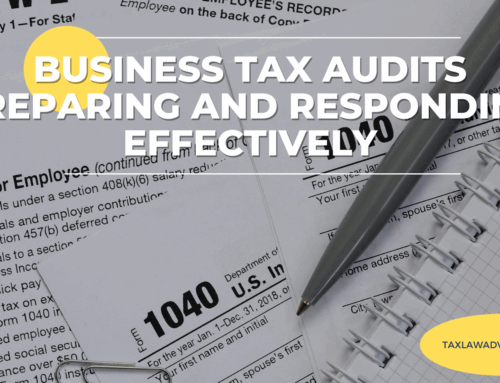Retirement planning is a critical aspect of financial management that can significantly impact your quality of life in your later years. Effective tax planning is a vital component of this process, helping to maximize your savings and minimize tax liabilities. We will explore various tax-advantaged retirement accounts, offer strategies for tax-efficient retirement planning, and highlight the importance of early planning and the impact of required minimum distributions (RMDs).
Understanding Tax-Advantaged Retirement Accounts
Traditional IRAs
Traditional Individual Retirement Accounts (IRAs) allow you to make contributions with pre-tax dollars, meaning the contributions are tax-deductible in the year they are made. The money grows tax-deferred until you withdraw it, at which point it is taxed as ordinary income. This can be beneficial if you expect to be in a lower tax bracket during retirement.
Roth IRAs
Roth IRAs are funded with after-tax dollars, meaning contributions are not tax-deductible. However, the money grows tax-free, and qualified withdrawals are also tax-free. This can be advantageous if you expect to be in a higher tax bracket during retirement. Roth IRAs also do not have RMDs, allowing your investments to grow tax-free for as long as you want.
401(k) Plans
401(k) plans are employer-sponsored retirement accounts that allow employees to contribute a portion of their salary pre-tax, reducing their taxable income for the year. Employers often match a portion of employee contributions, which is essentially free money for your retirement. Like traditional IRAs, the money grows tax-deferred and is taxed upon withdrawal.
Strategies for Tax-Efficient Retirement Planning
Contribution Limits
Understanding and maximizing contribution limits is essential. For 2024, the contribution limit for a 401(k) is $23,000 for individuals under 50, with an additional $7,500 catch-up contribution for those 50 and older. For IRAs, the limit is $7,000, with an additional $1,000 catch-up contribution for those 50 and older. Making the maximum allowable contributions can significantly enhance your retirement savings.
Early Planning
Starting your retirement savings early can have a profound impact due to the power of compounding interest. The earlier you start, the more time your money has to grow. Even small contributions made early can result in substantial savings over time.
Diversification
Diversifying your investments across different types of accounts and asset classes can help manage risk and improve returns. Consider a mix of stocks, bonds, and other assets, and utilize both tax-deferred and tax-free accounts to balance your tax exposure.
Understanding RMDs
RMDs are mandatory withdrawals that must be taken from traditional IRAs and 401(k)s starting at age 73. Failing to take RMDs can result in hefty penalties—50% of the amount that should have been withdrawn. Planning for RMDs is crucial to avoid unexpected tax burdens. Roth IRAs do not have RMDs, making them a valuable tool for tax-efficient retirement planning.
Impact of Withdrawals
Traditional Accounts
Withdrawals from traditional IRAs and 401(k)s are taxed as ordinary income. It is important to plan the timing and amount of these withdrawals to avoid pushing yourself into a higher tax bracket. Consider withdrawing just enough each year to stay within a lower tax bracket.
Roth Accounts
Qualified withdrawals from Roth IRAs are tax-free. This can provide flexibility in retirement, allowing you to manage your taxable income effectively. For instance, in years where you need extra funds but want to avoid a high tax bill, you can withdraw from your Roth IRA.
Additional Considerations
Tax-Efficient Investments
Consider investing in tax-efficient assets, such as tax-exempt municipal bonds and U.S. savings bonds. Municipal bonds generate federally tax-exempt income, while U.S. savings bonds are exempt from state and local income taxes. These can provide steady income without a significant tax burden.
Life Insurance and Annuities
Life insurance policies with cash value can be used to supplement retirement income in a tax-efficient manner. Annuities can also provide a steady income stream, with the tax treatment depending on whether the annuity was funded with pre-tax or after-tax dollars.
Charitable Trusts
Charitable trusts can be an effective way to reduce your tax burden while supporting a cause you care about. Donations to charitable trusts can provide immediate tax deductions, and assets held in the trust are not subject to taxes.
Social Security and Medicare
Taxation of Social Security
Social Security income is taxed differently than earned income. Depending on your total income, up to 85% of your Social Security benefits may be taxable. Understanding the tax implications of your Social Security benefits can help you plan your retirement income more effectively.
Medicare Premiums
Medicare premiums can be deducted from self-employment income after retirement. Additionally, up to $100,000 can be transferred each year to a charity from an IRA or 401(k) after age 70½ without incurring taxes, and the contribution will count as an RMD.
Effective tax planning for retirement involves understanding the various retirement accounts available, maximizing contributions, planning for RMDs, and making tax-efficient investment choices. Early planning and strategic withdrawals can significantly enhance your retirement savings and reduce your tax burden.
For personalized assistance and expert advice on tax-efficient retirement planning, contact Tax Law Advocates at 855-612-7777 or visit our website. Our team of professionals is dedicated to helping you navigate the complexities of retirement tax planning and secure your financial future.






